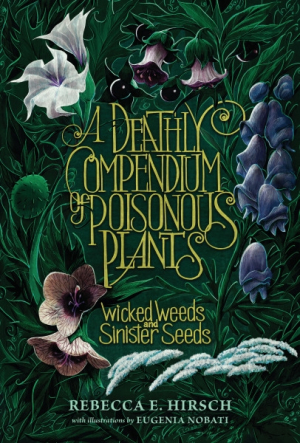A Deathly Compendium of Poisonous Plants
Wicked Weeds and Sinister Seeds
Plant physiologist Rebecca E. Hirsch’s botanical reference text A Deathly Compendium of Poisonous Plants explores the fascinating, often grisly world of dangerous plants.
Clear and precise, the twenty-three chapters each cover a different species, including mandrake, belladonna, and henbane. Each plant’s appearance, where it is most often found, and how its poisons work within a body are detailed. For instance, the book explains that strychnine is absorbed through the nose and digestive tract and affects the nervous system, leading to protracted muscle contractions until the respiratory system shuts down.
Most entries also include an enthralling story of how or when a particular plant was used in a real-life incident. A timber tycoon in China was poisoned by heartbreak grass, a plant containing gelsemine, by a forest official who had been caught embezzling money from him. And a fungus called ergot, which can grow on rye, is theorized to have led to the Salem witch scare. It has been postulated that infected rye was milled, turned into bread, and consumed. The resulting symptoms, including convulsions, delusions, and an intense burning sensation, were easy to connect to dealings with the devil.
Symptoms of plant poisons are shared in graphic detail. Respiratory distress, vomiting and diarrhea, and even the development of gangrene are just a few of the painful effects mentioned. Several stories conclude with fully conscious victims struggling for breath and experiencing excruciating pain right up until the moment of death. These vivid descriptions are horrific and unforgettable. Beautiful color photographs and drawings throughout the book make the plants easy to identify and bring their use throughout history into vivid focus.
A memorable, enjoyable reference book, A Deathly Compendium of Poisonous Plants combines often gruesome historical anecdotes with edifying botany lessons.
Reviewed by
Catherine Thureson
Disclosure: This article is not an endorsement, but a review. The publisher of this book provided free copies of the book to have their book reviewed by a professional reviewer. No fee was paid by the publisher for this review. Foreword Reviews only recommends books that we love. Foreword Magazine, Inc. is disclosing this in accordance with the Federal Trade Commission’s 16 CFR, Part 255.

